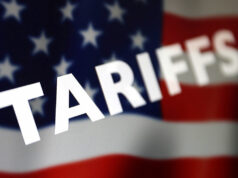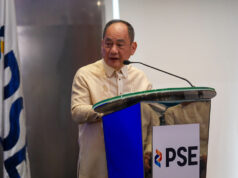PHL net liability position expands in third quarter
By Melissa Luz T. Lopez,
Senior Reporter
HIGHER INVESTMENT inflows drove the country’s net external liability position to widen further during the third quarter of 2017, the central bank said, amid sustained optimism among foreign investors on domestic economic prospects.
The country’s international investment position (IIP) widened to a net liability of $35.207 billion as of end-September from $33.514 billion logged during the first semester, the Bangko Sentral ng Pilipinas (BSP) said in a statement sent over the weekend. This also grew compared to the $28.436-billion net liability posted in September 2016.
The IIP takes stock of a country’s financial claims and liabilities. The wider liability came as the growth in foreign investments outpaced the increase in foreign assets accumulated by the government and local corporates from a year ago.
Foreign direct investments (FDI) and hot money inflows to the Philippines supported a 4.1% increase in liabilities to reach $201.782 billion, against a 0.7% pickup in foreign assets to $166.575 billion year on year.
“The expansion in liabilities reflected the higher outstanding debt instruments held by non-resident affiliates and increased holdings by non-residents of equity securities issued by residents,” the BSP said in a report.
For July-September, the central bank said FDIs posted a 4% rise compared to the second quarter, while flighty portfolio investments went up by 1.5%. The “significant” inflows and revaluations of these investments are supported by the country’s “sustained positive economic performance and growth prospects,” the BSP added.
This came despite a weaker peso-dollar exchange rate after the local unit traded above the P51 level during the quarter.
The peso depreciated by 1.2% to P51.073 against the US dollar as of end-September, which meant that outstanding foreign liabilities had a lower equivalent when expressed in the greenback.
On the other hand, foreign assets held by Filipino players posted a modest increase as local banks extended more loans to foreign borrowers, and with more residents investing abroad.
Dollar reserves maintained by the BSP kept the central bank at a net asset position, albeit at a lower level of $81 billion. This accounted for nearly half the country’s external claims.
Bank assets totalled $26.214 billion, up by a tenth from the previous year. Assets held by other sectors also grew by an annualized 8.5% to reach $59.335 billion, according to central bank data.
By type of instrument, debt instruments to support intercompany lending between multinational firms and their local units accounted for 15.1% of the total liabilities, while placements on shares of stock of issued by Philippine companies took a 12.5% share.



